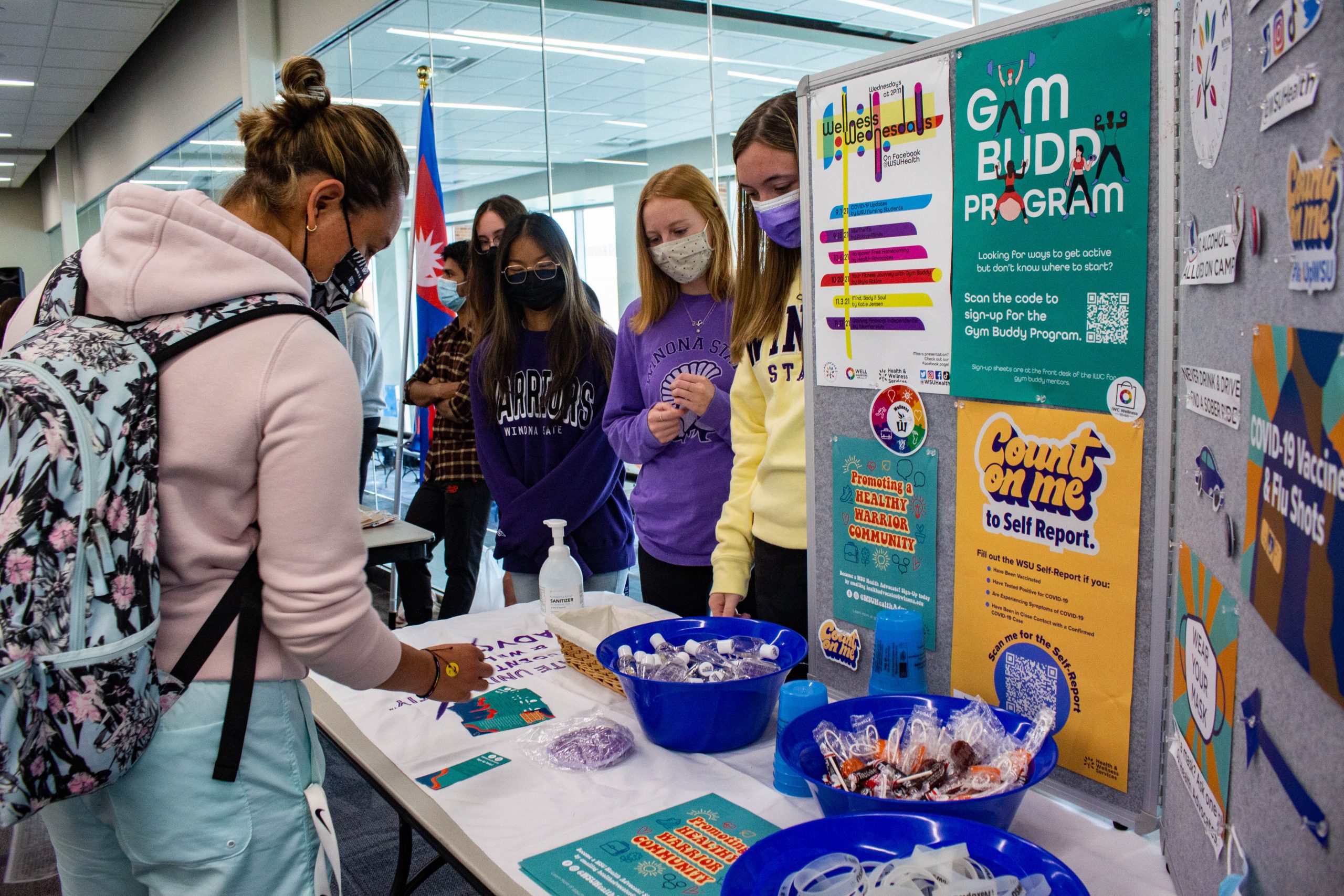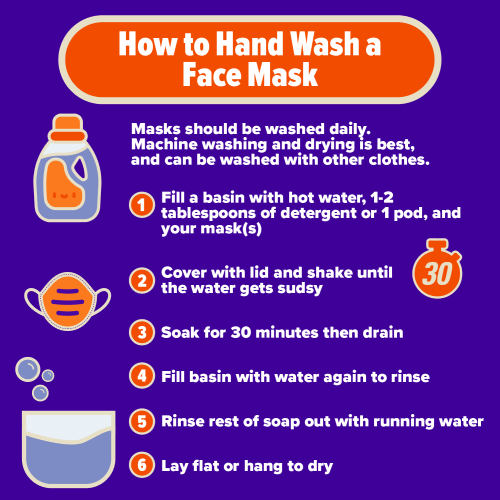
Wearing a mask can help prevent you and others around you from getting sick. Throughout the past few years, we’ve seen mandates been lifted and put back in place depending on COVID-19 case loads. Although there aren’t any current mandates in place, there may be times and places one may still wish to wear a mask.
Current recommendations for mask wearing:
-
- If you have symptoms of COVID-19 or tested positive.
- If you were exposed to COVID-19.
- In health care settings & facilities*
- CDC recommends wearing a mask in indoor public transportation (airplane, train, or bus) settings regardless of community level.
- CDC recommends wearing a mask in high COVID-19 community level while in public indoor settings, regardless of vaccination status, risk factors, or previous COVID-19 infection.
- CDC recommends wearing a mask in medium-to-low COVID-19 community levels while in public indoor settings if you:
- Have personal risk factors or health conditions.
- Risk factors of others around you.
- Settings where people at increased risk gather.
- Personal preference.
*Some settings may have specific federal, state, local, or business-level rules about wearing masks, regardless of the CDC COVID-19 community level.
As we begin our fall semester, you may want to revamp your masking attire. Chances are your masks have been washed dozens of times which causes the fabric to loosen and be less effective. When shopping for new masks, keep these tips in mind on how to wear face coverings during the COVID-19 pandemic.
Wearing Your Mask
Before we dive in any further, let’s go back to the basics and talk about how you should properly wear a mask, so it protects yourself and others around you. Here are some things to keep in mind:
-
- Your mouth and nose should be fully covered.
- Your mask should fit snugly against the sides of your face, so there are no gaps.
- You shouldn’t have any difficulty breathing while wearing the cloth face covering.
- Your mask should be tied or otherwise secured to prevent slipping.
- You should handle your mask with the straps or strings, and you should avoid touching the front of your mask.
- You should wash or sanitize your hands before putting the mask on and after taking it off.
Types of Masks
There are several types of face masks that offer varying levels of protection. For the most protection, fit is key. Make sure that your face mask covers your nose, mouth, and chin to prevent leaks.
Do not wear face masks that are wet, dirty, or broken.
N95 & KN95 Masks
N95 & KN95 offer the most protection and are often grouped together because they are very similar. They both filter out the 95% of particles. When wearing a N95 or KN95 mask, your odds of contracting COVID-19 decrease by 83%.
Do not add another mask or layer to N95 or KN95 masks.
Surgical Masks
Surgical masks are widely available, single use and disposable masks.
Wear surgical masks with:
- A proper fit over your nose, mouth, and chin to prevent leaks. You can improve the fit by knotting and tucking your ear loops for a more snug fit.
- Multiple layers of non-woven material.
- A nose wire.
DO NOT wear two disposable masks at one time. However, you can double up on a surgical mask and cloth mask to increase the amount of layers and fit.
Cloth Masks
Cloth masks can be made from a variety of fabrics and can easily be washed and reworn.
Wear cloth masks with
- A proper fit over your nose, mouth, and chin to prevent leaks.
- Multiple layers of tightly woven, breathable fabric, ideally 2-3 layers. If you have a cloth mask with only 1-layer, consider putting a disposable mask underneath it to improve fit and protection.
- Nose wire. A nose wire helps to improve fit of your mask and prevents air from leaking out the top of your mask.
- Fabric that blocks light when held up to bright light source.
Do NOT wear cloth masks with
- Gaps around the sides of the face or nose.
- Exhalation valves, vents, or other openings.
- Single-layer fabric or those made of thin fabric that don’t block light.
Over time, the fabric within cloth masks may loose their elasticity and effectiveness. Toss out old cloth masks.
Preventing Foggy Glasses While Wearing a Mask
You know what’s more annoying than having to wear a mask? Wearing a mask that fogs up your glasses.
To prevent your vision from being compromised, wear your glasses over your mask.
Selecting a mask with a nose wire will provide a more “snug fit” and keep your breath inside the mask.
Wash your glasses with liquid soap. This will create a thin layer of soap molecules that will from a transparent coating that inhibits fog formation.
You can also use a medical adhesive to lightly tape your mask onto your face to further prevent fogging.
How to Wash a Cloth Mask
Masks should be washed daily or at least in between each use. Machine washing and drying is best and can be washed with other clothing. Here’s what you do:
Where to Buy Face Masks
If your mask is starting to exhibit signs of wear and tear such as holes or material thinning it may be time to consider buying a new face mask or changing it out with a newer one that you have. Below are online stores and places in Winona that have masks available for purchase.
Online |
In-Store |
Mask Accessories |
|
Mask Holder and Extender – Helps to take pressure off your ears and fit your mask tightly to your face. Face Mask Lanyard – Helps hold mask in place both when in use and when not in use. Mask Cord Adjuster – Helps you to adjust your masks ear straps so that your mask fits better. |
We recommend owning multiple masks to rotate and clean, especially if you have in-person classes or are an essential worker.
If we follow these guidelines together, then we will overcome this pandemic together. Let’s each do our part!
